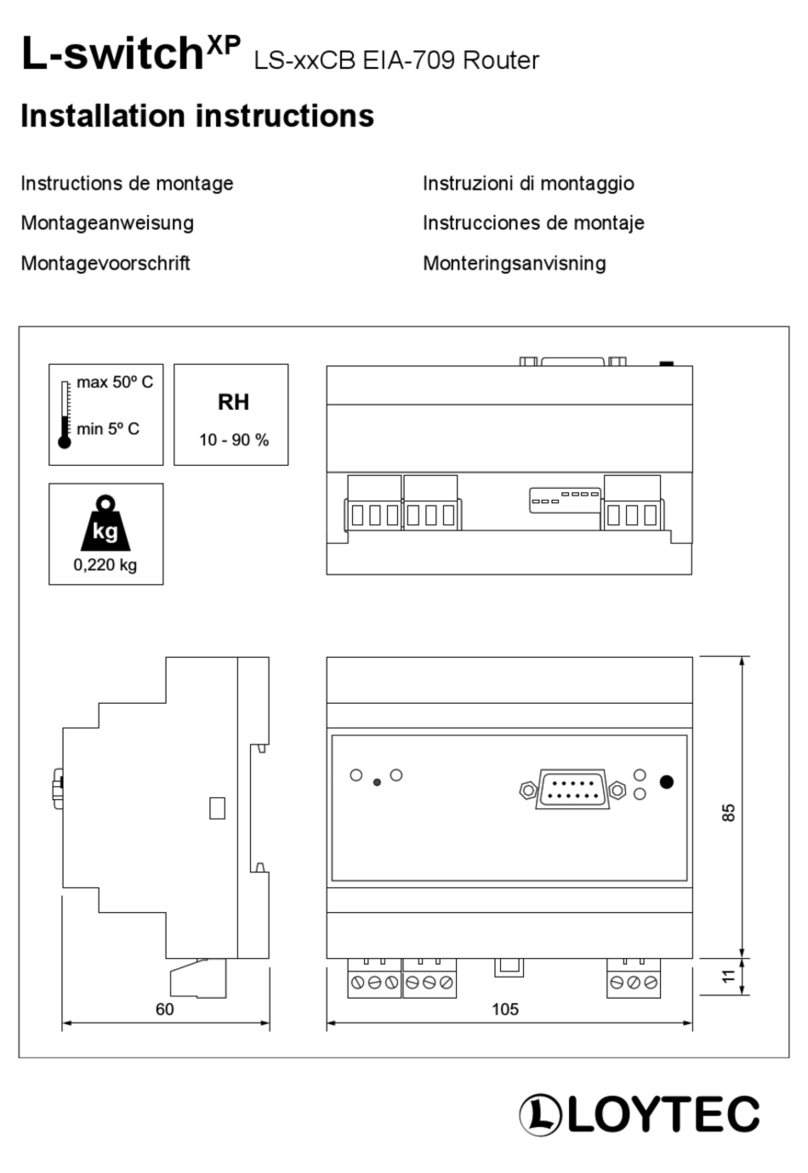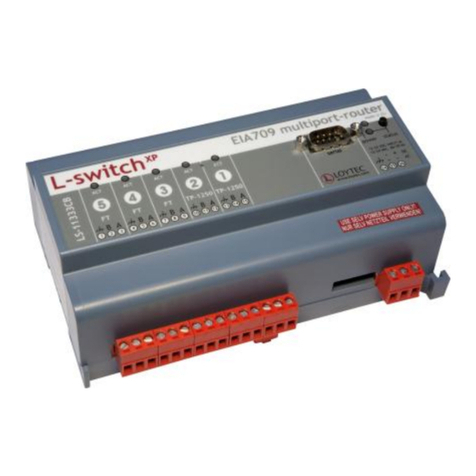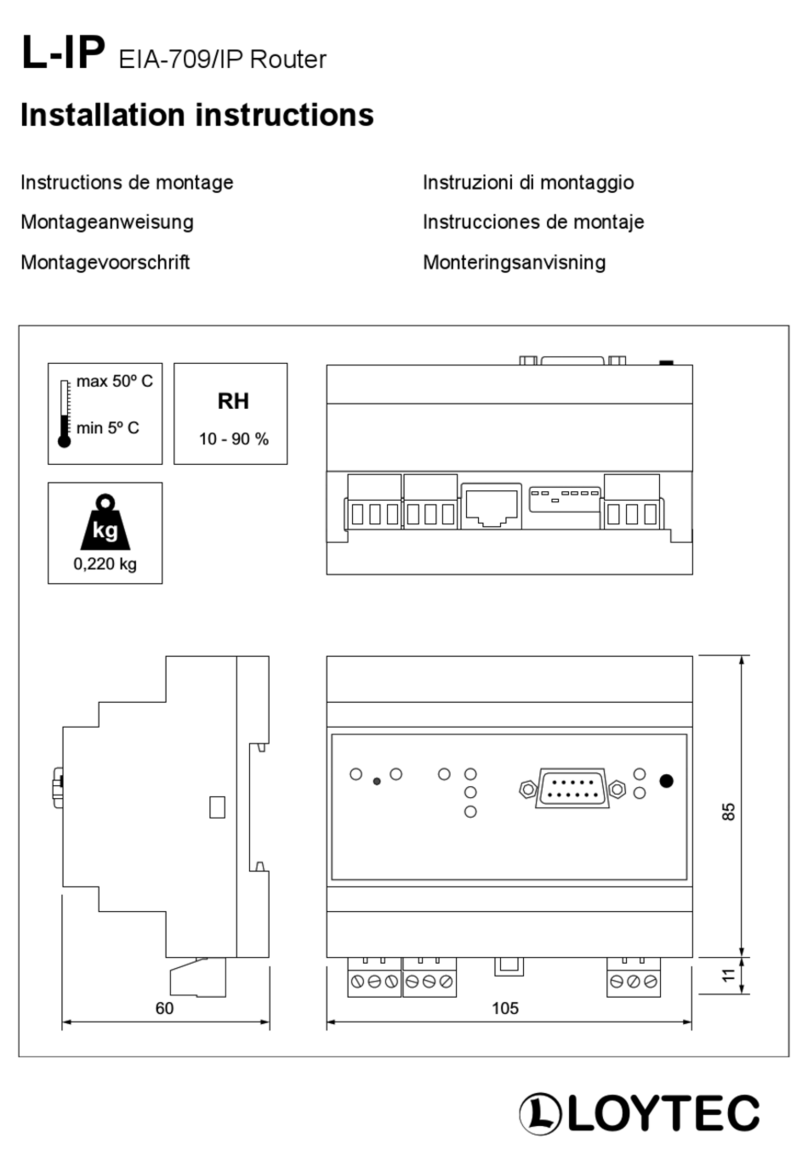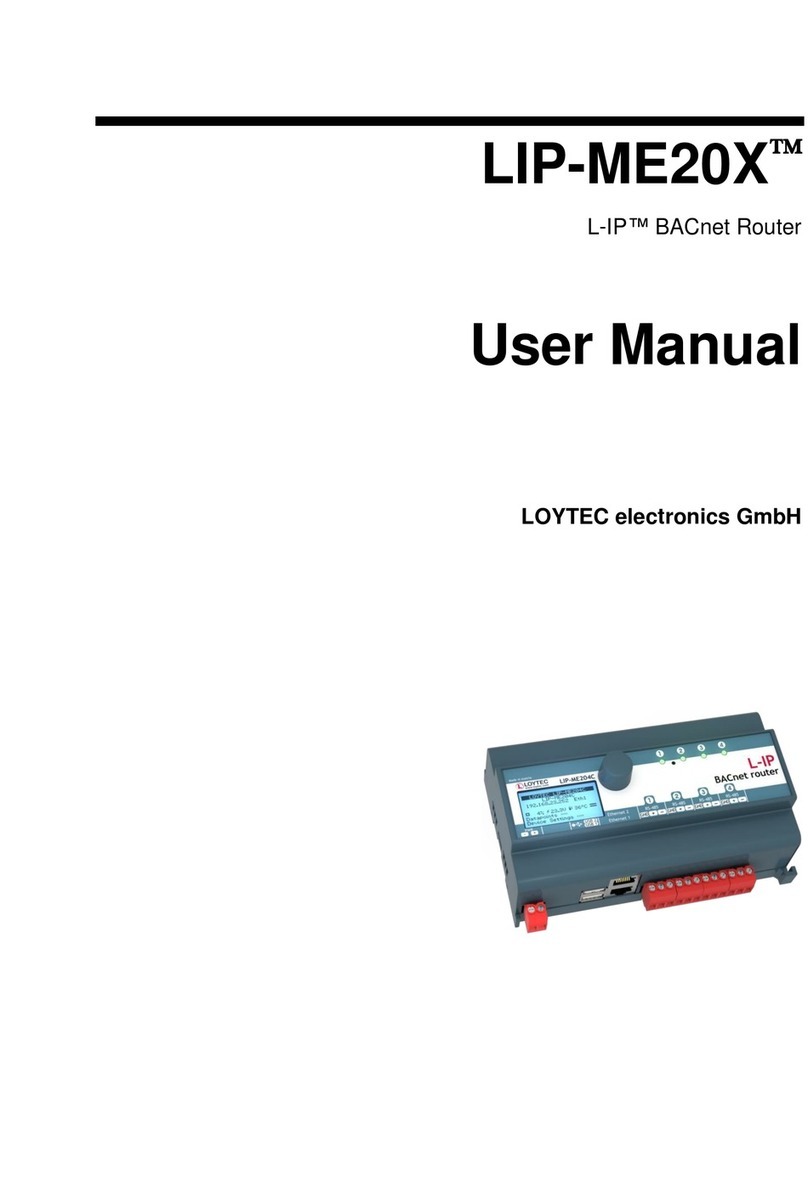L-IP CEA-709 User Manual 5 LOYTEC
Version 6.1 LOYTEC electronics GmbH
6.2.17 Documentation.........................................................................................79
6.3 Device Statistics.................................................................................................80
6.3.1 System Log ..............................................................................................80
6.3.2 IP Statistics ..............................................................................................80
6.3.3 CEA-852 Statistics...................................................................................81
6.3.4 Enhanced Communications Test..............................................................82
6.4 Documentation...................................................................................................82
6.5 Reset, Contact, Logout......................................................................................83
7Operating Modes........................................................................................84
7.1 CEA-709 Router - Operating Modes...............................................................84
7.1.1 Configured Router Mode .........................................................................84
7.1.2 Smart Switch Mode..................................................................................85
7.1.3 Store-and-Forward Repeater Mode..........................................................86
7.1.4 Smart Switch Mode with No Subnet Broadcast Flooding........................86
7.2 CEA-852 Operating Modes..............................................................................87
7.2.1 CEA-852 Device......................................................................................88
7.2.2 CEA-852 Configuration Server................................................................88
7.3 Firewall and NAT Router Configuration........................................................90
7.3.1 Automatic NAT Configuration ................................................................90
7.3.2 Multiple L-IPs behind a NAT: Extended NAT Mode..............................91
7.3.3 Multiple L-IPs behind a NAT: Classic Method .......................................93
7.4 Multi-Cast Configuration.................................................................................94
7.5 Internet Timing Aspects....................................................................................94
7.5.1 Channel Timeout......................................................................................95
7.5.2 Channel Delay..........................................................................................95
7.5.3 Escrowing Timer (Packet Reorder Timer)...............................................95
7.5.4 SNTP time server.....................................................................................96
7.6 Advanced Topics ...............................................................................................96
7.6.1 Aggregation..............................................................................................96
7.6.2 MD5 Authentication ................................................................................96
7.6.3 DHCP.......................................................................................................96
7.6.4 Dynamic NAT Addresses.........................................................................96
7.7 Network Buffers ................................................................................................97
8The L-IP in a Network...............................................................................98
8.1 L-IP Acts as a Standard CEA-709 Configured Router..................................98
8.2 L-IP Acts as a Smart Switch.............................................................................99
8.3 Using L-IP in LNS (LonMaker) Networks......................................................99
8.4 Using the L-IP as the Network Interface for LNS Applications..................100
8.5 Remote LPA Operation ..................................................................................102































